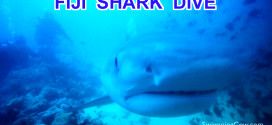This is a requested post about Raja Ampat for divers.
Although Raja Ampat is virtually unheard of by the average person on the street, to divers these two words conjure images of spectacular dives at every turn in one of the most inaccessible spots on earth.
I visited Raja Ampat in West Papua, Indonesia between late November and early December 2015 onboard MV Black Manta. This came on the heels of a banner year of diving where I went on 2 other liveaboards in Thailand and Indonesia (Similan and Surin Islands; Komodo National Park) and completed about 60 dives within a span of 9 months. With the benefit of hindsight, here’s my no holds barred overview on Raja Ampat. For those with a shorter attention span, there’s a tl;dr version at the bottom.
Minimum Trip Length
8 days, but that’s truly the bare minimum. This amount of time would allow you to see one region of Raja Ampat (ie. north, central, or south) but not the entire place. Given the amount of air travel involved and how physically taxing this trip can be, I wouldn’t advise making any important plans on both ends of the trip.
Access
If you’re leaving from Singapore, the most popular route is Singapore – Jakarta – Makassar – Sorong. The port at Sorong is where dive boats are moored before they sail into Raja Ampat Marine Park. This 3-flight route usually takes at least 14 hours door to door (one way). All told, there will be 2 full days of travel and yes, it is as exhausting as it sounds.
Another way to reach Raja Ampat is to go Singapore – Manado – Sorong, but this seemingly-easier route has a much longer transit time (8 hours when I last checked) plus a nasty connecting flight at around 3am. The airfare is more expensive as well. All in all, divers favour the Makassar route for a good reason.
It’s worth reminding here that you need to leave a reasonable amount of time between flights because if you miss your connecting flight, your checked luggage will be thrown out of that flight and you might just be in situation where your luggage doesn’t arrive in time at Sorong, and you’re diving without your gear for the whole trip.
Cost
On a decently-furnished boat with about 18 dives (4 dives day on full diving days), it’s USD 2,900 (excluding marine park fees, tips, and gear rental, which costs another USD 300+). For a 26-dive trip on a luxury boat, it’s about USD 4,400 (again, excluding park fees and the like). This is all excluding airfare to Sorong.
Be very careful choosing your dive boat – ALWAYS check for up-to-date reviews of the boat and the dive operator, preferably from the last or current dive season. One friend of mine signed up for a boat to Raja Ampat without detailed research and lived to pay the price. What looked alright on the internet was a horror in person: the roof leaked and guest cabins dripped with water whenever it rained, one of two the dinghies used for diving broke down entirely, fuel stench was everywhere, etc. Research pays, folks.
Also, check for key features (eg. do cabins have an ensuite bathrooms or will 28 people (crew + guests) share 3 tiny, basic bathrooms on the boat? Such boats exist; remember: if it seems too good to be true, it probably is.
If you plan on renting *any* gear, check how much gear rental costs – some boats charge exorbitant amounts and you could rack up USD 60 for a torch (ahem: MV Black Manta, I’m looking at you).
What to Pack
Your full set of gear plus a dive torch if you’re doing the night dives. Bear in mind that there are weight limits for checked luggage and carry on luggage while flying domestically within Indonesia so don’t go crazy with the packing.
Bring US Dollars for gear rental, tips, as well as beer and soft drinks you consume on the boat.
The Diving
Raja Ampat is often marketed as a top dive destination, and there are indeed some cool things to be seen. The stand out would have to be sharks – black tips, white tips, and wobbegongs – which are sadly no longer easily seen in other parts of Southeast Asia due to the effects of overfishing.
The macro world in Raja Ampat is plenty exciting, and advanced divers are perhaps more likely to rave about the tiny Pontohi seahorse, Satomi’s seahorse, and hairy shrimp – none of which are larger than 1cm and takes an expert’s eye to spot during a dive.
While the diving was wonderful in many ways it was, to be entirely honest, not necessarily superior to some dives I’ve done in other parts of the world.
Sure, it has a bit of something for everyone – those who like corals, those who like macro life and those who like pelagics – but Raja Ampat doesn’t quite match the top dive destinations in each of these categories. On my boat alone, there were divers were favoured the coral gardens of the Philippines, those who favoured the macro diving in the Lembeh Straits and those who favoured the pelagics in the Maldives. Perhaps it was our high expectations that contributed to the let down, but real or imagined, this was our experience as a whole.
I suspect all this has less to do with Raja Ampat’s reputation preceding its name and more to do with the diving in this region going down hill over the last decade. With rising popularity amongst divers comes an exponential increase in boat traffic, which brings pollution – water pollution that impacts the reef health and sound pollution that frightens marine life away from its natural habitat.
A famous spot in Raja Ampat that just 2 years ago had been famous for frequent 10+ manta sightings in a single dive was a ho-hum site where the main thing to see 50+ divers. With so many people vying to see the famous rays, can you blame the mantas for all but abandoning this cleaning station? Many diving customs (eg. only one boat of divers is allowed to dive the site at any one time to avoid overcrowding) are being broken and the constant roar of the dinghy’s motor at the cleaning station is more than enough to keep the mantas away.
Another anecdote probably sums up this entire trip and where Raja Ampat is today: following our 18th dive, which was widely acknowledged on our boat as the best dive of the trip, another diver who had been to Raja Ampat multiple times was overheard saying, “This is how diving in Raja Ampat should be like.” Tellingly, the standard of diving in this area has worsened and only one dive out of the entire trip was comparable to a typical dive at Raja Ampat years ago.
Satomi’s seahorse (Photo Credit: John Sear)
All in all, the people who would most appreciate Raja Ampat for what it is today are probably advanced macro divers and/or photographers who would willingly endure a brutal travel schedule in exchange for one good shot of the 8mm tall Satomi’s seahorse. You can also see a much bigger version of it here:

Dive Experience Required
Unlike a few other dive destinations, Raja Ampat does not require divers to hold a minimum level of dive certification in order to dive its sites. However, that is not to say that dive conditions are always be smooth, the ocean being what it is. Since you are in such a remote part of the world, any problems (eg. decompression sickness) cannot be dealt with quickly and the nearest town (Sorong) lacks the facilities to provide proper medical care in case of emergencies even if you do manage to reach it.
Familiarity with negative entry will be needed, and like all dives in any part of the world, it’s important to pay close attention to your dive guide and to your surroundings. Your dive guide should be familiar with the sites you’re diving. If any particular spot at a dive site might have a strong down current, they will also advise you in advance what to do in the event you get dragged into the current.
In the end, diving always carries risk. Just because the corals are beautiful does not mean there aren’t any dangers lurking. Currents can turn suddenly and you need to respect the fact that you’re out in the wilderness. Just prior to my own trip, the MV Black Manta had lost a diver who reportedly did not like to follow instructions and got trapped in strong down currents. The search and rescue has now been called off and he is presumed dead.
The tl;dr Version
The reality is that Raja Ampat these days looks better on TV than in person. Dive destinations are kept beautiful and pristine by the fact that they don’t see much human/diver traffic. Once upon a time, Raja Ampat was such one such haven. While it is still beautiful in many ways, it falls on one important consideration: reward-for-effort ratio. Raja Ampat’s reknown amongst divers has already translated into deteriorating dive conditions here – not just in terms of coral health and marine life (especially pelagics), but also in basic matters such as where one can dive. And once you consider the Herculean effort involved in getting to Raja Ampat in the first place, its reward-for-effort ratio is frankly unenticing, especially once you consider other dive destinations in Asia.
If you had visited 8-10 years ago, Raja Ampat would’ve probably been the paradise it is reputed to be. Sadly, anyone making their first trip to Raja Ampat today has already missed the boat in seeing the true beauty of this spot, whose reputation is increasingly overshadowing its reality. Personally, based on current trends, I have no plans to return to Raja Ampat. There are simply other dive spots that offer greater pay off, and may these places remain below the radar for years to come.
 J.J. Pedersen let’s go see the world
J.J. Pedersen let’s go see the world



